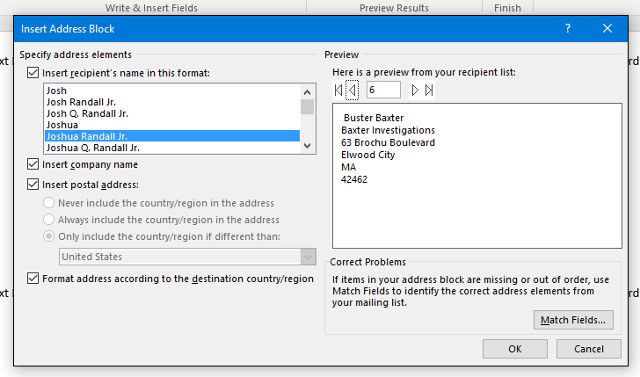


To add the address block, click Address block and click OK. For more info, see Set up a mail merge list with Word. Word data file is a data source you can create on the fly, within Word. See Use Outlook contacts as a data source for a mail merge. Outlook Contact List contains data in a format that can be read by Word. Tip: Use the '30 Per Page' option for mailing labels like you'll see in the screenshots throughout this article. In the 'Label Options' window, select your preferred brand and type of label. Click 'Start Mail Merge' and select 'Labels'. Drag the bottom right corner to make the dialog box bigger. For more info, see Prepare your data source in Excel for a mail merge in Word for Mac. Open a new Microsoft Office Word document and go to the 'Mailings' tab. Make sure the First row of data contains column headers box is selected and click OK.Ĭheck your list. In Word, click Mailings > Start Mail Merge > Step-by-Step Mail Merge Wizard to start the mail merge wizard.Ĭhoose Labels, and then click Next: Starting document.Ĭhoose Label options, select your label vendor and product number, and then click OK.Ĭlick Browse, select your Excel mailing list, and then click Open. worlds most popular spreadsheet and is part of the Microsoft Office suite. I have had no success in importing a CSV file into PC-ORD. Follow the below steps, you can easily import and export CSV & Excel files. If this is the first time using this feature, select Insert Address to browse the Outlook Address Book for an address. For example, using Microsoft Word, you can highlight a table in a PC-ORD output file. Click Envelopes to open the Envelopes and Labels dialog. Once your mailing addresses are set up in an Excel spreadsheet (see the previous video to learn how), it's a snap to get Word to create mailing labels from them. You can use Word's Envelopes and Labels feature to print envelopes. This year, you can avoid that awful permanent-marker smell and get all your holiday card and package labeling done in a few quick steps.


 0 kommentar(er)
0 kommentar(er)
